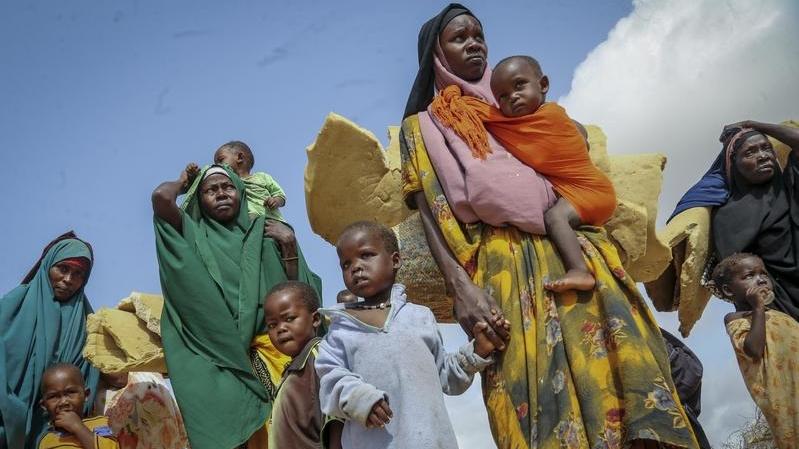 In this file photo dated on June 30, 2022, Somalis who fled drought-stricken areas carry their belongings as they arrive at a makeshift camp for the displaced on the outskirts of Mogadishu, Somalia. (FARAH ABDI WARSAMEH / AP)
In this file photo dated on June 30, 2022, Somalis who fled drought-stricken areas carry their belongings as they arrive at a makeshift camp for the displaced on the outskirts of Mogadishu, Somalia. (FARAH ABDI WARSAMEH / AP)
ADDIS ABABA — The Horn of Africa is facing an unprecedented drought emergency with catastrophic consequences, the United Nations Office for the Coordination of Humanitarian Affairs (UNOCHA) warned on Tuesday.
The UNOCHA said in its latest Horn of Africa drought situation update that the situation could worsen further amid deteriorating weather conditions across the affected countries.
The UNOCHA further warned that the ongoing drought situation is ravaging affected communities, with needs spiraling
READ MORE: UN: Horn of Africa hit by drought, cholera
"Communities in the Horn of Africa are in the midst of a likely fifth consecutive failed rainy season -- with the October to December 2022 rains beginning poorly and forecasts indicating they are likely to underperform -- and may face a sixth failed season in March to May 2023," the UNOCHA said.
The October-December 2020, March-May 2021, October-December 2021, and March-May 2022 seasons were all marred by below-average rainfall, leaving large swathes of Somalia, southern and southeastern Ethiopia, and northern and eastern Kenya facing the most prolonged drought in recent history, while the March-May 2022 rainy season was the driest on record in the last 70 years, it said.
It said the 2020-2022 drought has now surpassed the horrific droughts in 2010-2011 and 2016-2017 in both duration and severity and will continue to deepen in the months ahead, with catastrophic consequences.
READ MORE: Drought in Africa puts children 'one disease away from catastrophe'
The UNOCHA further warned that the ongoing drought situation is ravaging affected communities, with needs spiraling.
Across the Horn of Africa, at least 36.4 million people will be affected by the most prolonged and severe drought in recent history in the last months of 2022, including 24.1 million in Ethiopia, 7.8 million in Somalia, and 4.5 million in Kenya, according to the figures from the UNOCHA.


